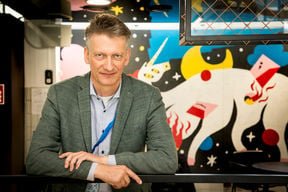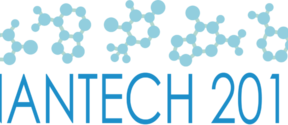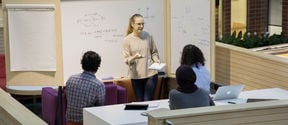Nantech 2019 (external link)
Nantech 2019 workshop at Aalto University campus

There are at least a couple of things Professor Kurt Gothelf wishes people outside his field knew about DNA nanotechnology.
First of all, DNA, the genetic material of all life, is a long chain of organic molecules that contains a kind of a digital code. Second of all, synthesizing DNA is pretty straightforward and therefore scientists can also write the program.
For these reasons, DNA can be used in artificial settings and it can be formed into two- or three-dimensional designed structures. In the future, such nanostructures can be used in the development of more advances drugs and diagnostic tools.
Professor Gothelf, who works at the Danish Aarhus University, has his background in organic chemistry. He first became interested in DNA research in the beginning of the millennium. Supported by a grant from the Danish government, Gothelf and his colleagues established a research center and started studying DNA nanotechnology in 2007.
The invention of the so-called DNA origami method in 2006 aroused his interest in conducting polymers that could potentially be placed as wires on the origami surface. In DNA origami, a single, very long, natural DNA strand can be folded, in a similar manner as a paper origami, using a set of two hundred short, synthetic DNA strands. The method revolutionized the field.
‘This has opened a new field for studying biophysical phenomena. It will undoubtedly have an impact on the development of new and more advanced medicines and diagnostic tools in the future.’
Gothelf visited Aalto University in the end of May. He was one of the invited speakers of Nantech2019, a workshop on Nucleic Acid Nanotechnology. The three-day workshop organized by Aalto University brought together international scientists working on various aspects of the topic.
At Nantech, Gothelf spoke about self-assembly and optical properties of single molecule polymers on DNA origami. He had looked forward to attending the event.
‘It is a very focused conference on DNA nanotechnology. It’s a nice opportunity to see the new things moving in the field, get inspiration, and discuss with colleagues and hear their talks. The list of speakers was very good.’
Kurt GothelfIf you are educated in DNA nanotechnology, you really have an interdisciplinary training
According to Gothelf, one aspect that makes DNA nanotechnology such an amazing field is its interdisciplinarity. Researchers come from different backgrounds: molecular biology, physics, computer science, engineering, and mathematics, to name a few.
‘If you are educated in DNA nanotechnology, you really have an interdisciplinary training.’
Another thing he enjoys is the scientific community of nice people. ‘Of course, there’s competition – and there has to be competition – but in a good way. The people are really nice to hang out with.’
Gothelf first got interested in academic research when he was working on his Master’s thesis. ‘I was so fascinated by imagining and then creating new molecules. I knew that this is what I want to do.’
However, the road to a stable life in the university world wasn’t always easy. After finishing his doctoral studies, it took him 11 years to get a permanent position.
‘The most difficult part of my career was definitely going from being a postdoc to the tenure-track. All of a sudden, you have to get funding, recruit and supervise students. You need to teach and prepare for classes that takes a lot of time in the beginning. At that age, you also often get kids. You have all this uncertainty. You want to work really hard, but also take care of your kids. That is very tough.’
However, soon after being appointed to the position of associate professor, things moved on quickly and Gothelf became a full professor in 2007. The Danish professor recently published an article together with colleagues from two Finnish universities, Aalto University and the University of Jyväskylä. Nevertheless, this was the first time he visited Aalto University.
‘I have never been a tourist in Helsinki, so I’ll try to catch up with that as well,’ Gothelf says laughing.

Nantech 2019 workshop at Aalto University campus

cs.aalto.fi



